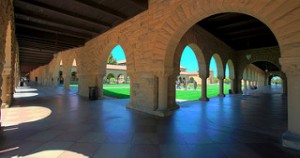Podcast: Play in new window | Download
Subscribe: Apple Podcasts | RSS
 This episode of The Engineering Commons finds the gang discussing how engineers are perceived by those outside the engineering field.
This episode of The Engineering Commons finds the gang discussing how engineers are perceived by those outside the engineering field.
- Jeff accidentally reveals the plot of a well-known fairy tale, Rumpelstiltskin, while sharing a childhood recollection.
- At the end of 1981, when Jeff graduated from college, inflation in the U.S. was around 10%, six-month certificates of deposit (CDs) were paying 13.1% interest, and 30-year mortgages carried a hefty 17% interest rate. He was happy to find a job (at any salary).
- Between 1994 and the top of the dot-com bubble, Brian opines, it was a prevalent attitude that an engineering career could lead to significant wealth.
- As of 2006, a third of S&P 500 CEOs had undergraduate engineering degrees, says Business Insider.
- Jeff remembers working with secretaries who would type his hand-written memos onto company letterhead using a IBM Selectric typewriter.
- As recently as 2011, there was but one engineer in the US Congress. However, there are currently seven engineers in the House of Representatives, and one engineer in the Senate (says a Congressional Research Service report).
- From the “give-yourself-a-pat-on-the-back” category, Adam reminds us of the graph titled, This Chart Shows Just How Much Smarter Engineers Are Than Everyone Else.
- We discuss whether engineers really are a “different breed.”
- Carmen thinks the TV series Silicon Valley does a reasonable job of portraying engineers.
- Episode 40 of this podcast, titled “Engineering Fiction,” discussed how engineers are depicted in today’s mass media.
- It turns out that Bill Nye (the Science Guy), is a Mechanical Engineer who used to work for Boeing.
- A common myth is that engineering school is difficult; in fact, it’s brutal.
- Brian notes the difference in permanence between electrical and civil engineering projects.
- A healthy number of engineering students graduate with the misconception that engineers work alone and need not follow directions.
- A Mythbusters episode (#222) demonstrated that unassigned seating results in the fastest boarding time for a passenger plane, but also generates the least satisfaction among passengers.
- With business casual attire the current norm, engineers don’t have to worry very often about the social significant of wearing a “red power tie.”
- Carmen notes that our past episodes with Cherish Bauer-Reich and Sophi Kravitz may shed some light on additional stereotypes encountered by women entering the engineering field.
Thanks to Steve Jurvetson for the photo titled “Widening Perception.” Podcast theme music by Paul Stevenson.